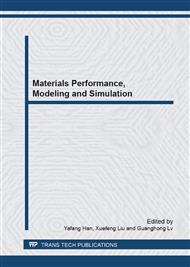p.198
p.205
p.211
p.217
p.223
p.229
p.237
p.243
p.250
The Microstructural Evolution of AA6111 Aluminum Alloy during Homogenization Treatment
Abstract:
The microstructures of AA6111 automotive aluminum alloy were investigated by optical microscopy (OM), scanning electron microscopy with energy dispersive X-ray spectroscopy (SEM-EDX), differential scanning calorimetry (DSC), X-ray diffraction analysis (XRD) and transmission electron microscope (TEM). The results indicated that as-cast AA6111 alloy has a complex microstructure. There were many kinds of intermetallic phases, such as lath-shaped β-Al5FeSi, Al15(FeMn)3Si2 and Mg2Si on the grain boundaries. The Al5Cu2Mg8Si6 precipitates presented non-equilibrium eutectic morphology in the grain interiors. After homogenization treatment (6h at 470), the low melting point Mg2Si phase began dissolving. The eutectic Al5Cu2Mg8Si6 phase were dissolved completely after 530/24h homogenization treatment. The Al15(FeMn)3Si2 phase started to be spheroidized at 560. Increasing treatment temperature will promote Mn to substitute for Fe in this phase.
Info:
Periodical:
Pages:
223-228
Citation:
Online since:
March 2013
Authors:
Price:
Сopyright:
© 2013 Trans Tech Publications Ltd. All Rights Reserved
Share:
Citation:


